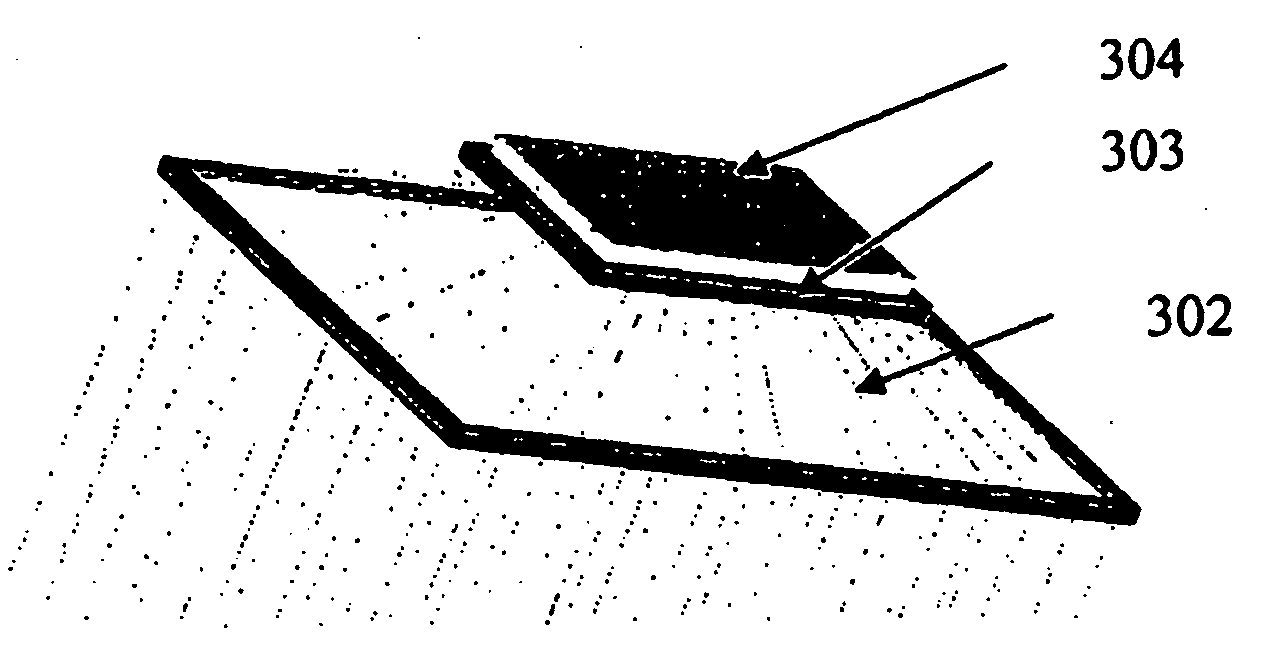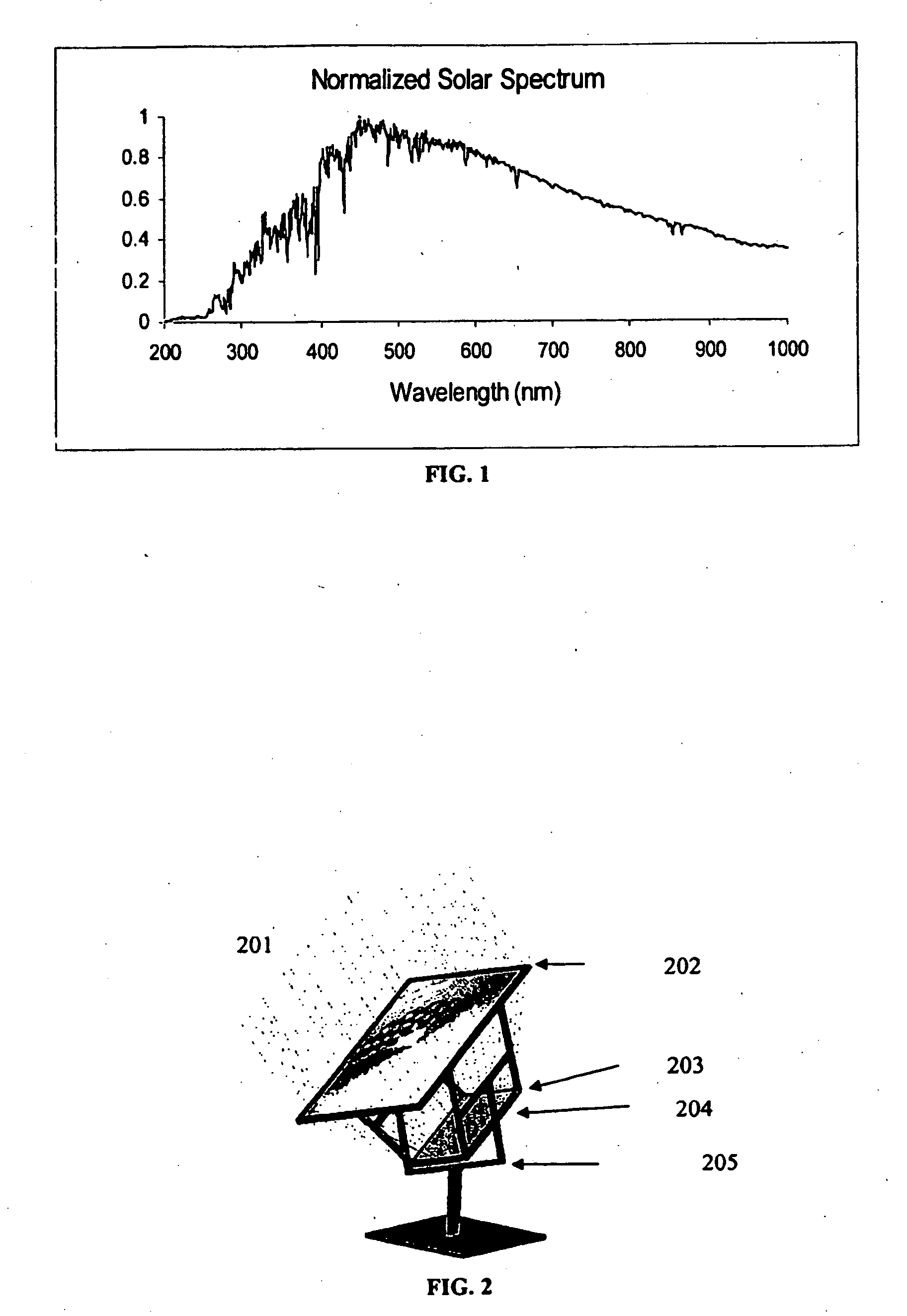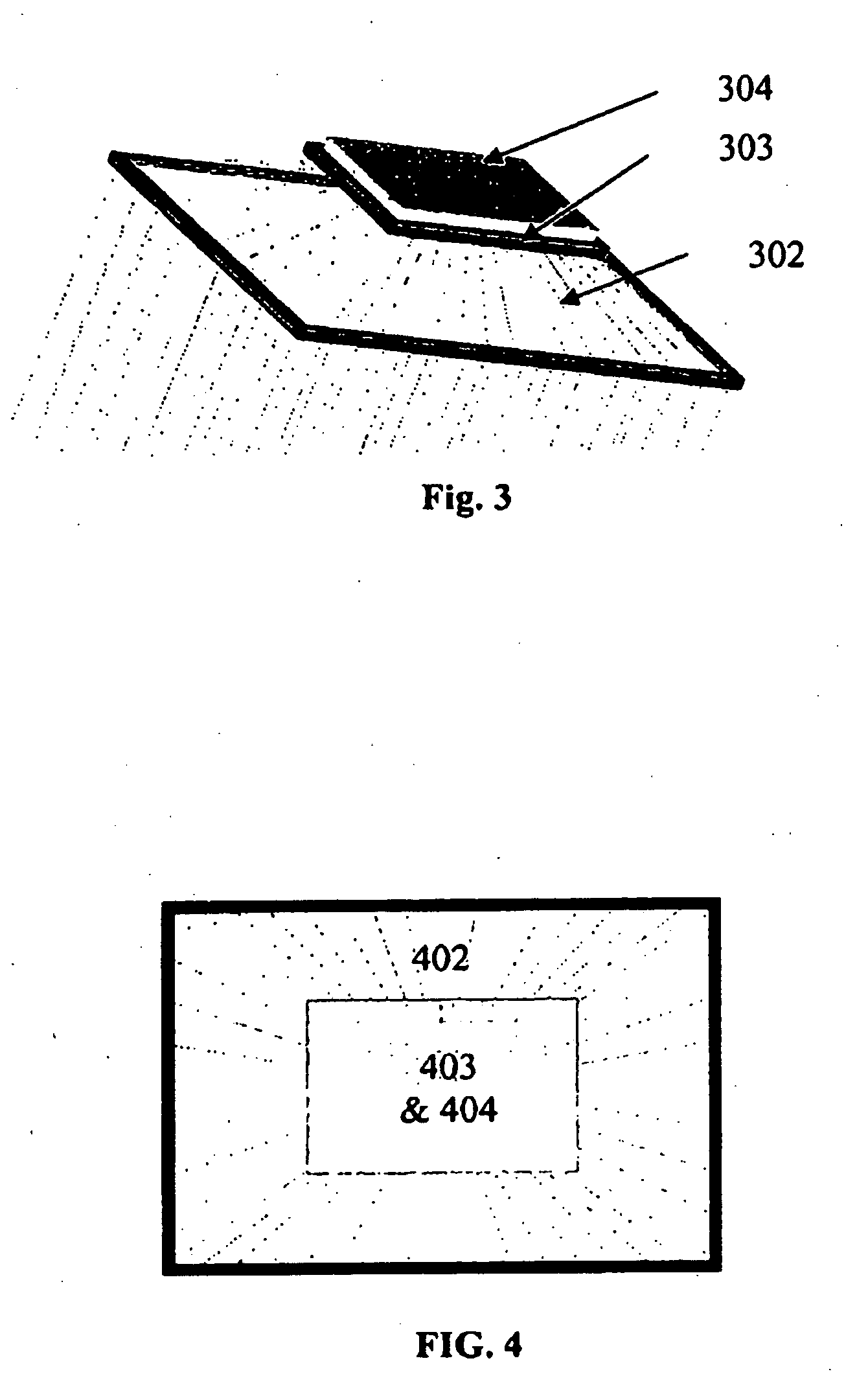Solar augmentation system
a photovoltaic cell and solar energy technology, applied in the field of photovoltaics, can solve the problems of increasing the cost of solar energy storage, reducing the efficiency of single crystal silicon pv cells, and limiting the efficiency of conventional pv solar cells
- Summary
- Abstract
- Description
- Claims
- Application Information
AI Technical Summary
Benefits of technology
Problems solved by technology
Method used
Image
Examples
Embodiment Construction
[0057]Reference will now be made in detail to the preferred embodiments of the present invention, examples of which are illustrated in the accompanying drawings. FIG. 2 is an embodiment of the solar panel condenser apparatus that incorporates an optical condenser that is larger in collection aperture than the solar cell. The optical condenser (or solar condenser optic) can increase the effective area of the solar cell by a factor of about 2, preferably about 3, or more preferably about 4 (or any practical magnification ratio), therefore increasing the number of photons contributing to photo-generated electrons or usable current.
[0058]Solar energy does not generate sufficient current in typical solar cells to raise the material into saturation condition. Accordingly, use of a larger collecting optic can result in increased current output. As is evident from Equation 2, the increase in current, which can result from using an optical condenser, is linear over a large range prior to sat...
PUM
 Login to View More
Login to View More Abstract
Description
Claims
Application Information
 Login to View More
Login to View More - R&D
- Intellectual Property
- Life Sciences
- Materials
- Tech Scout
- Unparalleled Data Quality
- Higher Quality Content
- 60% Fewer Hallucinations
Browse by: Latest US Patents, China's latest patents, Technical Efficacy Thesaurus, Application Domain, Technology Topic, Popular Technical Reports.
© 2025 PatSnap. All rights reserved.Legal|Privacy policy|Modern Slavery Act Transparency Statement|Sitemap|About US| Contact US: help@patsnap.com



